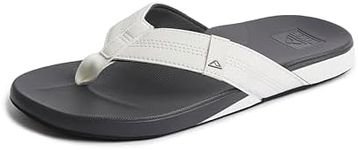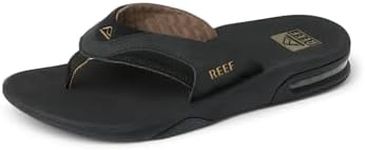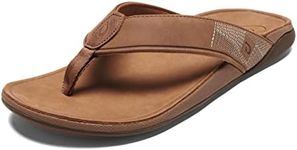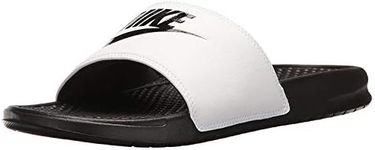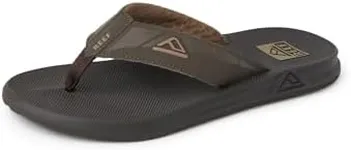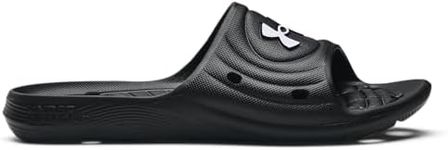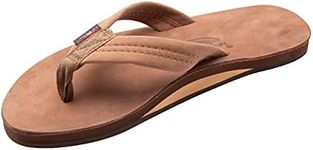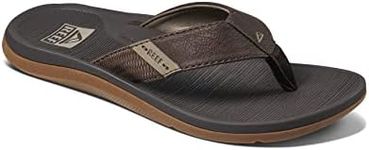Buying Guide for the Best Mens Flip Flops
Choosing the right men's flip-flops is about finding a balance between comfort, durability, and style that matches your lifestyle. Flip-flops are a popular choice for casual wear, beach outings, or quick errands, but not all are created equal. To make a smart choice, you should consider how and where you plan to use them, as well as your personal preferences for fit and appearance. Understanding the key features will help you pick a pair that feels good, lasts long, and suits your needs.MaterialThe material of flip-flops affects comfort, durability, and how they feel on your feet. Common materials include rubber, foam, leather, and synthetic fabrics. Rubber and foam are lightweight and water-friendly, making them great for the beach or pool, but may wear out faster. Leather offers a more stylish look and can be more durable, but is less suitable for wet conditions. Synthetic options often balance comfort and durability. Think about where you'll wear your flip-flops most—if you need something for water, go for rubber or foam; for everyday casual use, leather or synthetic might be better.
Sole Thickness and CushioningSole thickness and cushioning determine how comfortable and supportive the flip-flops will be. Thin soles are lightweight and flexible but may not provide enough support for long walks. Thicker soles with added cushioning offer more comfort and shock absorption, which is important if you plan to wear them for extended periods. If you have sensitive feet or plan to walk a lot, look for flip-flops with a thicker, cushioned sole. For quick trips or beach use, a thinner sole might be sufficient.
Arch SupportArch support refers to how well the flip-flops support the natural curve of your foot. Many basic flip-flops are flat, which can lead to discomfort if worn for long periods, especially for people with high arches or foot issues. Some flip-flops are designed with built-in arch support to provide better comfort and reduce fatigue. If you have foot pain or need extra support, look for flip-flops that mention arch support. If you only wear them occasionally or for short periods, this may be less important.
Strap Design and ComfortThe strap design affects how securely the flip-flops stay on your feet and how comfortable they feel. Straps can be made from various materials like rubber, fabric, or leather, and may be wide or narrow. Wide, padded straps tend to be more comfortable and less likely to cause irritation, while narrow straps can sometimes dig into the skin. If you have sensitive skin or plan to wear them for long periods, look for soft, padded straps. For quick use or style, strap design may be more about personal preference.
Grip and TractionGrip and traction refer to how well the flip-flops prevent slipping, especially on wet or smooth surfaces. The sole pattern and material play a big role here. Flip-flops with textured or patterned soles offer better grip, which is important for safety around pools or in the shower. If you plan to use your flip-flops in wet environments, prioritize good traction. For mostly dry, indoor use, this may be less critical.
Fit and SizingGetting the right fit is crucial for comfort and preventing blisters. Flip-flops should fit snugly without your toes or heels hanging over the edge. Some brands may run larger or smaller, so it's important to try them on or check sizing guides. If you have wide or narrow feet, look for options that accommodate your foot shape. A good fit ensures you can walk comfortably and safely.
Style and ColorStyle and color are about personal preference and how you want your flip-flops to look. There are many options, from simple and classic to bold and colorful. If you want something versatile, choose neutral colors that match most outfits. If you want to make a statement, go for bright colors or unique patterns. Pick a style that fits your personality and intended use.

